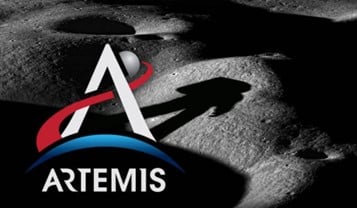An engineer named Victor makes a few final adjustments to his novel radial compressor design just before midnight. With a deep breath, he clicks the “Save” button and pushes back from his desk. He has done it, he has brought to life something new. He feels a little like Dr. Frankenstein and shouts out – “It’s alive!” to the empty office.
But what comes next? In the corporate R&D landscape we live in today, IP protection is critical. Victor and his employer have invested a lot of money in the work, and they expect their investment to be protected. Who has this responsibility? What are the correct steps? What resources are available? IP protection in the corporate landscape is a complex legal field, and each case has its own variables. This blog will highlight just a few key steps, resources, and considerations that are common to many facilities involved in R&D.
Let’s take a step backward for a second, back to when Victor’s design was still a pencil sketch on the back of a diner placemat. Some consideration should have been given to the existing patent landscape. It is important to gauge the available “white space” to operate within. If the specific concept that Victor is planning to explore is pretty heavily protected by rich, broad patents, then Victor and his company may want to think twice about the financial commitment. However, many times, the new method represents an improvement over existing protected or public domain technology. In this case, Victor didn’t invent radial compressors, but he did figure out how to increase their efficiency significantly using an unusual blade design made possible by using additive manufacturing. He definitely might have something there.
So, either through patent searches or other institutional knowledge of the existing IP landscape, Victor and his company felt there was appropriate patent whitespace and a good business argument for the research. With that settled, let’s jump forward again; the design was a rousing success, and the company has produced and tested several prototypes. In another month, Victor will proudly present his new design at a conference in Orlando, Florida. His company is even talking to customers about incorporating this new design into their next-generation products.
Even with all this interest, however, the company has not yet given the go-ahead to begin a nonprovisional patent application, which will probably be the best way to protect IP that will be clearly visible to the public. In the modern, post-America Invents Act IP world, what steps can be taken to protect their IP and their future right to file a nonprovisional application, should they so choose?
If discussions with third parties were limited to controlled meetings, then a well-crafted Non-Disclosure Agreement (NDA) is probably a sufficient tool for protecting the IP embodied within the discovery. The public presentation to the peer conference, however, presents a bit more of a concern. It is either impractical or impossible to sign an NDA with each audience member, so the company will need to take further action to prevent unwanted public disclosure of their IP.
Especially under the American Invents Act-defined grace period, inventors and patent attorneys alike are extremely hesitant to rely on the traditional one-year grace period for invention disclosures. Accordingly, it could be a great idea for the company to file a well-crafted provisional patent application to secure both parties respective rights for further consideration, armed with a clear picture of the market, after having “tested the waters”. The time and dollar cost of a provisional application should be a mere fraction of a full scale nonprovisional application, making the provisional route a fairly low-risk measure. With a well-crafted provisional patent application freshly filed with the PTO, the engineer can confidently present his findings in sunny Orlando, build a business case for the nonprovisional patent expenses, and solidify himself as one of the top engineers in his field.
Key Takeaways:
- -These considerations are a shared responsibility between the person and the company.
- -Provisional Patents are a key tool post America Invents Act.
- -NDAs are also a key tool, but only when disclosure is focused and controlled.
The material contained herein is meant to be informational only, and is not intended to be nor should be considered legal advice. I urge you to seek out professional counsel if you have specific questions regarding any of the topics addressed within this hypothetical.




